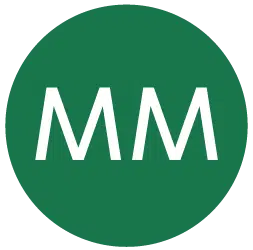





Overview
Legally Compliant Document Archiving
As of version 2010, auditors generally confirm that SharePoint can be used as a legally compliant e-archive for storing documents, especially electronic invoices, under certain conditions. However, a closer look reveals that a concrete, compliant implementation requires detailed expertise, complex configuration, and extensive organizational measures. With our AuditProof Add-on, you can solve this problem easily and sustainably.
Screenshots
How it Works
Benefits
Benefits of the Solution
Efficiency
You do not need additional hardware, resulting in significant cost savings. The easy-to-install add-on also does not require high organizational effort.
User-friendly
Benefit from high transparency and user-friendliness. You can start without lengthy training.
GAAB Compliance
The solution is GAAB compliant for Austria and Germany according to IDW PS880, verified by one of the Big Four auditors.
Compliance
Why is legally compliant archiving of relevant electronic documents and records so important?
On one hand, it is in the company’s own interest to store business-relevant documents in a way that protects them from unauthorized deletion or manipulation. On the other hand, in Austria and Germany, the respective corporate and tax laws have specific requirements regarding the quality and duration of the storage of certain documents.
Compliance with these requirements is typically reviewed by internal auditing (if present) and an appointed auditor during regular audits. On the other hand, from a risk perspective, the tax office’s auditor in the event of a tax audit is probably even more important.
These requirements include, for example…
• The Austrian Commercial Code (UGB), especially §§ 190 and 216,
• The Federal Fiscal Code (BAO), especially §§ 131 and 132,
• The principles of proper accounting (GoB),
• The Data Protection Act (DSG), especially § 14, and
• The expert opinions “The Properness of EDP-Based Accounting” (KFS/DV1) and “Audit of Financial Statements with the Use of Information Technology” (KFS/DV2) of the Expert Committee for Data Processing of the Institute for Business Management, Tax Law, and Organization of the Chamber of Certified Public Accountants.
• The legal provisions of German commercial and tax law (especially §§ 238 ff. HGB and §§ 140-148 AO),
• The principles of proper accounting (GoB),
• The BMF letter regarding the “Principles of Proper DV-Supported Accounting Systems (GoBS)” dated November 7, 1995,
• The BMF letter on the “Principles for Data Access and Auditability of Digital Documents” (GDPdU) dated July 16, 2001, taking into account the amendment of the BMF letter dated September 14, 2012,
• The statement of the Committee on Information Technology (FAIT) of the Institute of Public Auditors in Germany e.V. (IDW) “Principles of Proper Accounting with the Use of Information Technology” (IDW RS FAIT 1),
• The statement of the Committee on Information Technology (FAIT) of the Institute of Public Auditors in Germany e.V. (IDW) “Principles of Proper Accounting with the Use of Electronic Archiving Systems” (IDW RS FAIT 3),
• IDW Audit Standard 330 of the Main Committee of the Institute of Public Auditors in Germany e.V. (IDW) “Audit of Financial Statements with the Use of Information Technology” (IDW PS 330), and
• IDW Audit Standard 880 of the Main Committee of the Institute of Public Auditors in Germany e.V. (IDW) “Audit of Software Products” (IDW PS 880) in the version dated March 11, 2010.
















